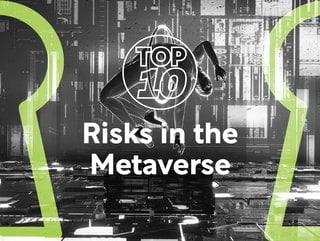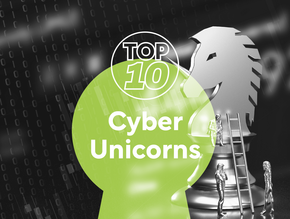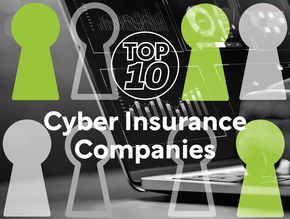
The future of technology is truly mind blowing. Artificial intelligence, robotics, quantum computing, augmented/virtual reality, and IoT represent only a fraction of the major technological advancements that are set to reshape our world in the coming years.
One of the most exciting and anticipated advancements it appears is the metaverse; a virtual space where individuals can socialise and engage in various activities, such as concerts, video games, workspaces and so much more. The metaverse has the potential to create new markets and industries that haven’t even been thought of until now, however, as with any new innovation, the metaverse comes with its own set of risks and challenges.
Cyber Magazine takes a closer look at some of the potential threats that users may encounter in the future of the metaverse, and what can be done to stay protected online.
10. New space, new dangers
The metaverse was founded with the idea of bringing people together, and while this naturally offers certain advantages, it can also present a number of challenges. Within the metaverse, users will encounter individuals whose opinions differ from theirs, with research suggesting that people often exhibit different behaviours in virtual settings compared to the physical world. In particular, this is seen in the field of massively multiplayer online role-playing games (MMORPGs), where regular gamers often criticise new players, even verbally abusing female players, for simply being female.
9. System outages and disruptions
Due to the sheer amount of data that they contain, metaverse platforms are susceptible to a number of system disruptions, which may result in major inconveniences for users, and in some cases, financial losses if transactions are disrupted. Additionally, such outages may be caused by malicious actors with the intent to destabilise and disrupt the platform, highlighting the importance of users remaining vigilant when online.
8. Mental health and real-world impacts
We are all probably guilty of spending a little too long looking at our screens. However, prolonged screen exposure and extensive social media engagement, especially relating to that of the metaverse, may begin to have an effect on the psychological well-being of the user. Extended time spent in virtual worlds could also begin to significantly disrupt sleep patterns and quality, which would result in the users’ behaviour changing in the real world, potentially affecting work, relationships, and simple daily routines.
7. Threats from bots
The widespread presence of automated bots poses a significant threat to metaverse users. These bots can be harnessed by malicious actors to flood servers with spam, initiate DDoS attacks, or potentially seize control of user accounts. The absence of strict regulation on metaverse platforms makes it challenging to identify and respond to these malicious bots effectively.
6. A lack of regulatory frameworks
As it stands, Metaverse systems operate outside the regulatory framework and are not subject to the same regulations as software platforms or traditional financial institutions. According to an article published by McKinsey, ‘one of the main challenges posed by the intersection of law, compliance, and the metaverse is the lack of clear legal frameworks’.
There are a number of aspects in the metaverse, including virtual currencies, digital property, and user-generated content, which have legal implications that remain unclear or are not understood at this time.
5. Virtual currencies and fraudulent activity
Virtual currencies enable users of metaverse platforms to buy virtual goods and unlock access to premium content. But as with any online purchases, there are risks associated with using virtual money and assets. One such threat is the risk of financial loss if users fail to exercise caution due to the fluctuation of asset value. Additionally, the use of virtual currencies may make consumers more vulnerable to fraudulent activities and scams, primarily due to the lack of regulations compared to traditional currencies.
4. Ransomware attacks
Ransomware refers to malicious software that has been designed to encrypt users’ data, preventing both the user and others from accessing it. Following this encryption, a message will typically be displayed on the screen with the hacker demanding a specific sum of money in order for the user to restore access to their data. A user’s metaverse profile contains a wealth of information, often including sensitive data, far beyond that of a typical social media page, which renders it highly vulnerable to these types of attacks.
3. Collection of unauthorised data
Data collection is an integral component of the metaverse experience. As users engage in these virtual environments, the platform gathers information about their actions and preferences, even their physical attributes through avatars, which can possibly lead to an increased risk of discrimination. Once accumulated, this data can then be used for unwanted targeted advertising or sold to third parties for financial gain, heightening the risk of unauthorised use of personal data. As well as this, businesses may no longer require an individual's consent or independent verification to access and maintain their data, due to the metaverse’s decentralised nature.
2. Harassment, cyberbullying, and safety of children
Mental health and well-being within the metaverse have been gaining some significant traction in the news. In this digital age, young adults and children in particular are extremely susceptible to cyberbullying and harassment online and are being exposed to a range of explicit content. According to experts, the metaverse's human experience is as authentic as our experiences in the physical world, therefore safeguarding users of any age in the metaverse is of utmost importance.
In order to begin combating these types of challenges, Meta launched Personal Boundary for the online game, Horizon Worlds, which will give users greater control of their VR experience. Personal Boundary is an invisible four-foot barrier feature that surrounds a user’s avatar in order to keep non-friends from getting too close.
1. Identity theft
The decentralised structure of the metaverse makes it considerably easier for cybercriminals to stealthily access users' data, resulting in private information being more susceptible to fraud or unauthorised access to their accounts or services. Identity theft in the metaverse is a cause for concern, as there are no current measures to prevent a user from creating a digital avatar that replicates another person's identity and appearance.
To address these issues effectively, user authentication needs to be implemented, combining biometric verification with multi-factor authentication and integrating blockchain technology. Through the use of biometric data like fingerprints, facial recognition, and voice recognition, we will begin to see a reduction in identity theft and fraud risks, since biometric data is considerably more challenging to replicate compared to conventional identification methods.
******
For more insights into the world of Cyber - check out the latest edition of Cyber Magazine and be sure to follow us on LinkedIn & Twitter.
Other magazines that may be of interest - Technology Magazine | AI Magazine.
Please also check out our upcoming event - Cloud and 5G LIVE on October 11 and 12 2023.
******
BizClik is a global provider of B2B digital media platforms that cover Executive Communities for CEOs, CFOs, CMOs, Sustainability leaders, Procurement & Supply Chain leaders, Technology & AI leaders, Cyber leaders, FinTech & InsurTech leaders as well as covering industries such as Manufacturing, Mining, Energy, EV, Construction, Healthcare and Food.
BizClik – based in London, Dubai, and New York – offers services such as content creation, advertising & sponsorship solutions, webinars & events.
- Norton: Report Highlights Rising Trend of AI Dating ScamsCyber Security
- Barracuda: Why Businesses Struggle to Manage Cyber RiskCyber Security
- Evri, Amazon and Paypal Among Brands Most Used by ScammersCyber Security
- ChatGPT at one: A valuable tool for attackers and defendersTechnology & AI






